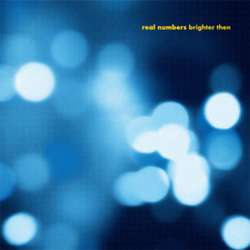We're proud to introduce a new series here at Scene Point Blank: One Question Interviews. Follow us at facebook or twitter and we'll post one interview every Monday-Thursday. Well, sometimes we miss a day, but it will be four each week regardless.
After our social media followers get the first word, we'll later post a wrap-up here at the site. Check out our quickie Q&As below with members of Henry Rollins, Buildings, The Hood Internet, and Daniel Menche.
Eli Hansen (Real Numbers/Three Dimensional Records)
SPB: Who is your favorite pre-1960s artist?
Hansen: I'll have to go with Chuck Berry... but it's not easy picking a favorite from the BIG THREE: Chuck, Little & Bo.
Santos Montano (Old Man Gloom)
SPB: How do you choose your album art?
Montano: There are two things that make Old Man Gloom function: Breakfast and solidarity. There is one caveat to this. Well, two. Our solidarity is compromised when I use the word "caveat," as it makes Nate furious, and the other is album art. There is simply no room for democracy when it comes to album art. We in Old Man Gloom rarely say no. There is almost no occurrence of an idea or concept, musical or personal that has been turned away by the collective. In fact, we pride ourselves on this.
"You want to write a song that's 30 minutes long? OK."
"You want to record 16 minutes of kittens eating canned tuna and call it a song? Can't see anything wrong with that."
"You want to spend hours driving to another state for breakfast, then practice for 20 minutes and call it a day? Sounds perfect."
Album art though: untouchable. Aaron Turner, co founder of The Old Man Gloom Center for Healing is a real nice guy. Just don't try to tell him what "art" is. One of the only fights we've ever had is because I said a font "didn't pop" on the liner notes of Meditations in B. He threw his desk over, and smashed the laptop to bits, losing the entire layout and the only existing copy of an unreleased Botch album. (This album was later rerecorded and released as We Are the Romans. The original recording had 6 more songs, and was recorded by Phil Spector in an abandoned sewage treatment plant in Bakersfield. Due to mishandling of the original tapes and lack of funds, it was rerecorded by Matt Bayles in Seattle.) So we've all learned to just give The General (as he makes us in Old Man Gloom call him) his space. As this will likely be seen by him, I will just say that I absolutely love his art work. All those weird poop balls and wiggly worms on the cover of NO were absolutely essential to the enjoyment of the music. And the whole monkey thing? Amazing. (You'll receive a second response via post with my real thoughts on his work).
I will say that it's very fortunate for Aaron that everyone else in Old Man Gloom is utterly incompetent and unable to draw a banana, let alone make an entire album layout, otherwise it may have gotten ugly in the beginning, and we wouldn't be the unstoppable musical behemoth we are. Which reminds me, we had a guy named Luke in the band once. He made some posters for a Boston show and silkscreened maybe 10 to give out. He's no longer in the band.
So to answer your question "how do we choose our album art?": We don't. He does.
Steven Hess (Locrian, Pan American, Innode, Haptic)
SPB: What appeals to you most about collaborative projects as compared with working with your regular band?
Hess: The challenge of creating music outside of my comfort zone, as well as the opportunity to work with other musicians and artists that I might not normally get a chance to work with. Each collaboration is a different journey, and learning process. You might think in advance, "I know exactly what I'm going to do with _____", but as any musician that has worked on a collaboration knows, what you have mapped out in your head at first is not what you always hear in the finished material. Collaborations are also a a way for me understand and overcome any boundaries and limitations that I might be experiencing at that particular time. You are always wanting to reach further and expand on your creativity, playing, and song writing, and with collaborations this is the perfect chance to do just that. Maybe, and hopefully, do something that you would not normally do in your "regular band". In the end it's all about the challenge, learning, expanding my improvisational skills, and creativity.
Brian Gorsegner (Night Birds)
SPB: Would you license your music for film, sports, or ads if given the opportunity? Are there exceptions to the rule?
Gorsegner: I would, and we have. Of course there are many exceptions. MTV used our song "Prognosis: Negative" for the intro credits to a new show they were doing with Will Ferrell as a surfing monkey or some garbage. They did not have our permission to do so, although they thought they did. The whole intro sequence was animated and done around our song when we found out about it, and we pulled the plug on it because we thought it was a sucky deal. If people are going to picture a surfing monkey every time they hear one of our songs we better at least be getting paid well for it!









